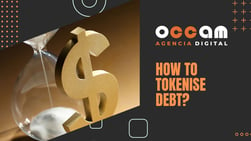Index Content
what do you want? Create my own token. Very well, we are going to give you 3 options: ETH, BNB and xDAI. And what is that? Different blockchains. What kind of token can I create? It depends on the purpose.
Creating a token has become an increasingly demanded action by people given the infinite capacity of this digital asset: using cryptocurrencies as a means of payment (utility token), representing rights and obligations for shareholders (security token), tokenising a company and obtaining ownership rights (equity token).
In other words, utility tokens can be created to help finance projects; tokens linked to a traditional financial asset, such as debt issued by companies; and tokens that represent part ownership, such as the tokenisation of real estate. In short, tokens can be classified according to their purpose.
where do tokens created via the ETH blockchain, BNB and xDAI fit in? Why do you want to create your own token?
The main differences between the ETH, BNB and xDAI blockchain
On the one hand, the ETH blockchain refers to the Ethereum platform, which allows decentralised applications to be executed. To do so, it has a blockchain and a cryptocurrency (Ether) that allows smart contracts and new tokens to be created. It is currently the most popular network and its main advantage is that there is a larger ecosystem of applications, centralised and decentralised exchanges, than in the other platforms. As a disadvantage, we point out its high cost as more transactions take place.
On the other hand, the BNB blockchain is a network backed by Binance, a hard fork of the Go Ethereum protocol that shows several similarities with the ETH blockchain. However, the main advantage of BNB is its lower cost, although it is highly centralised due to the network belonging to a private company. In addition, it has an ecosystem that is growing at great speed.
Finally, xDAI is the name given to the blockhain of the xDAI cryptocurrency. On the one hand, DAI is an ERC20 token, while xDAI is the blockchain itself. Its network is the fastest of the three, despite being very small. It is commonly used in projects that require a large number of transactions at a very low cost, taking advantage of the infrastructure of its blockchain.
The following table shows more clearly the differences between the ETH, BNB and xDAI blockchain:
|
BLOCKCHAIN ETH |
BLOCKCHAIN BNB |
BLOCKCHAIN xDAI |
|
Popularity |
Currently the most popular network |
It is less popular than ETH, although its ecosystem is growing by leaps and bounds |
Not as popular as the others, but increasingly used in projects that require a lot of transactions |
Speed |
Slowest of the three chains |
It is faster and more scalable than ETH and one of the main alternatives for running DeFi protocols |
Fastest |
Advantage |
Has a larger ecosystem of applications, centralised and decentralised exchanges than the others |
It is cheaper than ETH and its ecosystem is growing at a fast pace |
Its cost is practically zero at present |
Disadvantage |
As there are more transactions, the cost of the network is higher |
It is highly centralised, as the network is owned by a private company |
Still a very small network |
Frequently asked questions about blockchain and tokenisation
Below, we have answered some of the common questions about how the ETH, BNB and xDAI blockchain works, as well as tokenisation:
is an Ethereum token (ERC20) necessarily a cryptocurrency?
No. ERC20 is the name given to a token created on the Ethereum blockchain, and although it can behave like a cryptocurrency, they are not necessarily the same. In short, a cryptocurrency is a token, but a token does not necessarily have to be a cryptocurrency. The latter has its own blockchain and the token does not necessarily have to have one.
what is the difference between creating an ERC20 token and a BEP20 token?
While ERC20 is a way of naming a smart contract on the Ethereum blockchain, BEP20 is a token that runs on the Binance Dmart Chain (BNB).
what is the relationship between ETH, BNB and xDAI?
BNB is a hard fork of the Go Ethereum protocol, while xDAI is an EVM chain located in the Ethereum ecosystem.
what are the differences between utility, security and equity tokens?
Utility tokens are not regulated, as they are utility assets. They may offer benefits, discounts, etc., but they will never offer a return for the sake of holding them, e.g. the Binance token.
Security tokens are financial assets, as they are linked to a real asset, e.g. debt, and are regulated in most countries.
Equity tokens represent shares in a company and will only be freely transferable if the country's company law allows this, e.g. in Spain limited companies do not currently have this freedom, but public limited companies do.
are you looking for a multipurpose blockchain capable of executing smart contracts and DApps in a decentralised and secure way? Do you have doubts about how the ETH, BNB or xDAI blockchain works? Tell us about it at Occam Agencia Digital, we can help you.





